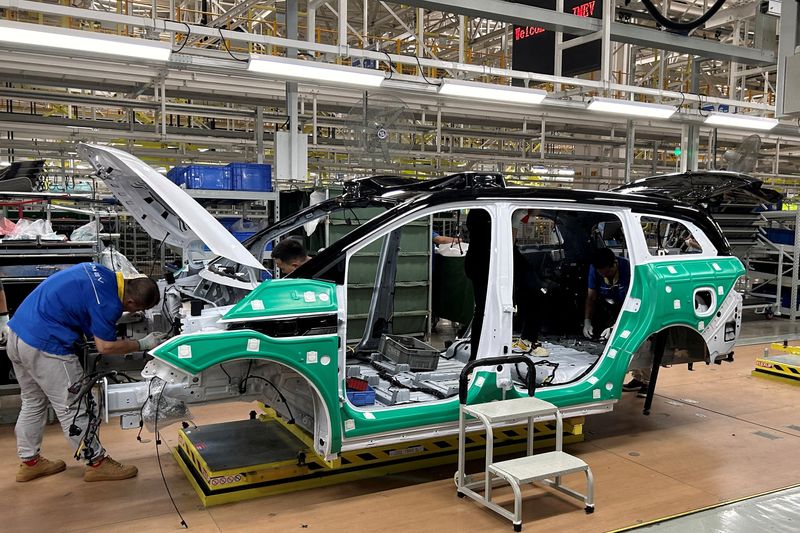Investing.com — The Chinese robotaxi market is a rapidly evolving sector, where leading tech companies are vying for dominance through technological innovation and strategic city rollouts.
The robotaxi market is primarily driven by LIDAR-based hardware and advanced neural network technology, which supports fully autonomous Level 4 (L4) driving.
Key players in the market include Baidu’s Apollo, PonyAI, WeRide, AutoX, and Didi, each at different stages of technological development and market reach.
Baidu (NASDAQ:BIDU) is ahead of the competition, with over 1,000 robotaxis operating in Wuhan, far surpassing rivals like PonyAI and WeRide.
These companies use a technology stack featuring LIDAR sensors, cameras, and other sophisticated perception tools to maneuver through complex urban settings.
“However, they are differentiated in remote control vs remote assist that solves for corner cases,” said analysts at Bernstein in a note dated Tuesday.
For example, Baidu addresses these scenarios through remote control capabilities, while WeRide emphasizes enhancing their neural networks to autonomously manage such challenges.
The economics of robotaxi operations depends on several important factors, including vehicle costs, research and development spending, and the size of the fleet.
L4 autonomous vehicles are much more expensive than regular cars because of their advanced sensors.
For example, Baidu’s latest model, the RT6, has lowered the cost per vehicle to RMB 205,000, compared to RMB 500,000 for previous models. This reduction in cost is key to making robotaxi operations more economically viable.
However, achieving breakeven at the business level requires substantial scale. “This requires 35k cars in operation to achieve this which is not possible in just one city- and will require pretty high ride hailing share in 4 of the major tier 1 cities,” said analysts at Bernstein.
This scale is necessary to offset the high fixed costs associated with R&D and city expansion efforts. Moreover, a fully loaded business model would require these robotaxis to capture a 25% market share in the ride-hailing industry across these cities.
Baidu’s strategy involves a phased rollout across major Chinese cities, starting with Wuhan and expanding to other tier-one cities like Guangzhou, Shenzhen, Beijing, and Shanghai by 2026. As per Bernstein’s projections, Baidu’s robotaxi business is not expected to be cash-flow positive until at least 2029, with full profitability anticipated around 2031.
This timeline accounts for continued investment in R&D and city scaling costs, which are expected to decrease as the technology matures and operations expand.
Despite the optimistic long-term outlook, the success of robotaxi services in China is heavily contingent on regulatory support and public acceptance.
While cities like Wuhan have been more permissive, allowing for extensive robotaxi operations, other tier-one cities have imposed stricter regulations, slowing the pace of expansion.
Additionally, the potential displacement of traditional taxi drivers and associated social issues pose significant challenges to widespread adoption










